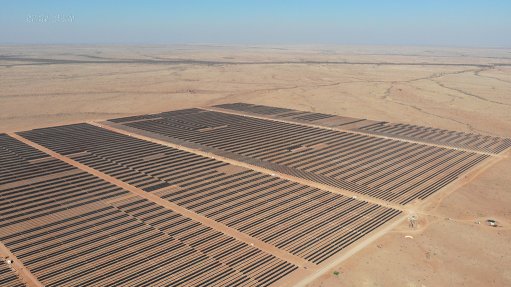How Important are 8 Digit Tariff Codes for your Business?
This article has been supplied as a media statement and is not written by Creamer Media. It may be available only for a limited time on this website.
Company Announcement - Before importing, traders need to calculate the potential duties payable on the imported product. It is necessary for the importer to ascertain the correct Harmonised System tariff code (product-specific numerical code) for the specific goods. The tariff code facilitates the identification of the product in international trade and assists the Customs authorities to enforce import or export controls such as permits, licensing requirements and quotas allowed, to determine the applicable duty payable, and to enforce measures relating to trade policies and rules of origin. If you are a domestic manufacturer, monitoring tariff codes under which imported competing products enter the South African market is vital for a number of reasons. You can find out from where, in what quantities and at what prices imported products are entering the market. This may be useful in adjusting marketing and pricing strategies as well as identifying threatening import trends that may need to be addressed through trade protection measures.
However, the problem is the South African tariff book does not always contain detailed tariff codes at the 8-digit level. In line with the World Customs Organization’s international tariff standards, some product categories are only defined to a 6-digit level. As an example, yogurt is classified as 0403.10. Some products are more specifically defined e.g. dried pea seeds for sowing under tariff subheading 0713.10.10. Tariff codes at the 6-digit level often contain numerous products that are similar or related but are different in some respects. Clearly, a sound analysis of the statistics to get any accurate useful information for a single specific product of interest becomes a problem. Splitting your tariff codes to 8 digits then becomes a necessary and strategic move particularly in light of the tough trading economic environment. Import competition from foreign exporters looking to sell their products in new growth markets such as South Africa may continue to increase and threaten survival of some domestically produced products. In 2013, ITAC initiated duty increase investigations covering 30 tariff codes resulting in duty increases on 26 of them while one was rejected, one withdrawn and two were yet to be finalised. Initiated duty removals only covered five tariff codes of which four resulted in duties being removed while one was rejected (the duty was maintained).
A detailed tariff description makes it easier to take such actions because import activity can be shown accurately. Duties are imposed or removed on the tariff code, so if there are many products in a tariff code, this may be a challenge as there may be unintended consequences. When adjudicating customs duty increases or removals the International Trade Administration Commission takes into account this point. A detailed and specific tariff code at the 8 digit level is not only important for imports but also for exports as valuable information pertaining to industry export destinations, prices, volumes and values can be collected for strategic decision-making purposes. What if the existing tariff codes are only defined to a 6-digit level? How can I go about getting the tariff code to be more specific? Splitting of tariff codes is done by SARS on an annual basis. The deadline for these applications was 31 August 2014 and will likely be the same date next year. It is always advisable to submit these applications well in advance in order to leave time to resolve any queries that may arise from SARS.
The application should focus on the wording of the tariff code and should guide SARS on what detailed information should be inserted into the tariff book for the said product. Alternatively, where there is a request for a change in the duty structure relating to a particular product classifiable under a tariff heading that covers different products, a tariff split can take place any time of the year.
Comments
Press Office
Announcements
What's On
Subscribe to improve your user experience...
Option 1 (equivalent of R125 a month):
Receive a weekly copy of Creamer Media's Engineering News & Mining Weekly magazine
(print copy for those in South Africa and e-magazine for those outside of South Africa)
Receive daily email newsletters
Access to full search results
Access archive of magazine back copies
Access to Projects in Progress
Access to ONE Research Report of your choice in PDF format
Option 2 (equivalent of R375 a month):
All benefits from Option 1
PLUS
Access to Creamer Media's Research Channel Africa for ALL Research Reports, in PDF format, on various industrial and mining sectors
including Electricity; Water; Energy Transition; Hydrogen; Roads, Rail and Ports; Coal; Gold; Platinum; Battery Metals; etc.
Already a subscriber?
Forgotten your password?
Receive weekly copy of Creamer Media's Engineering News & Mining Weekly magazine (print copy for those in South Africa and e-magazine for those outside of South Africa)
➕
Recieve daily email newsletters
➕
Access to full search results
➕
Access archive of magazine back copies
➕
Access to Projects in Progress
➕
Access to ONE Research Report of your choice in PDF format
RESEARCH CHANNEL AFRICA
R4500 (equivalent of R375 a month)
SUBSCRIBEAll benefits from Option 1
➕
Access to Creamer Media's Research Channel Africa for ALL Research Reports on various industrial and mining sectors, in PDF format, including on:
Electricity
➕
Water
➕
Energy Transition
➕
Hydrogen
➕
Roads, Rail and Ports
➕
Coal
➕
Gold
➕
Platinum
➕
Battery Metals
➕
etc.
Receive all benefits from Option 1 or Option 2 delivered to numerous people at your company
➕
Multiple User names and Passwords for simultaneous log-ins
➕
Intranet integration access to all in your organisation


















